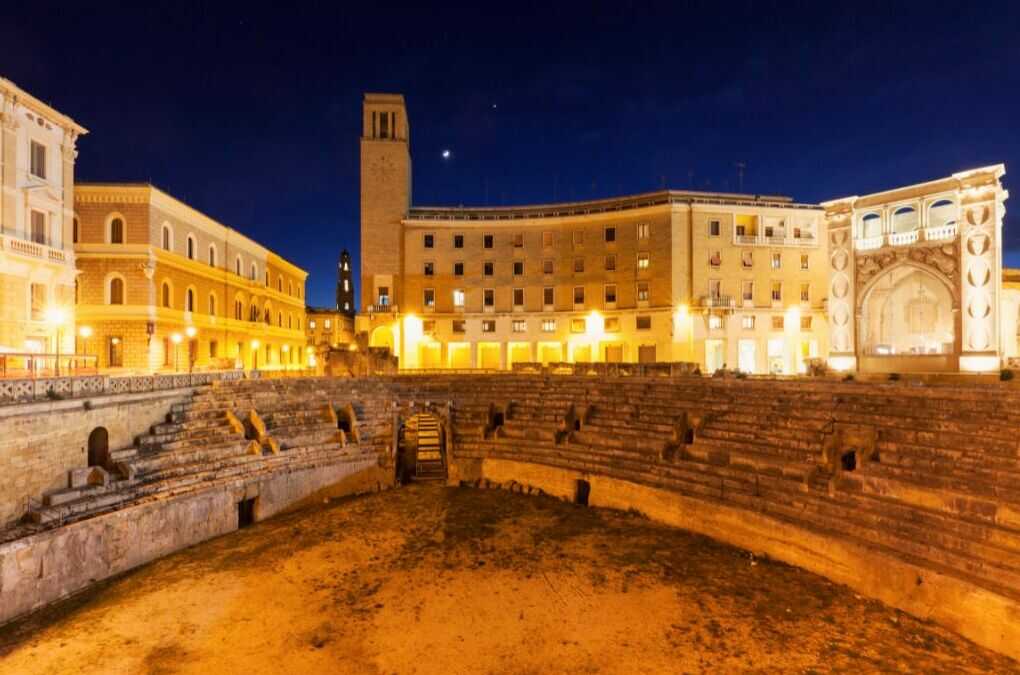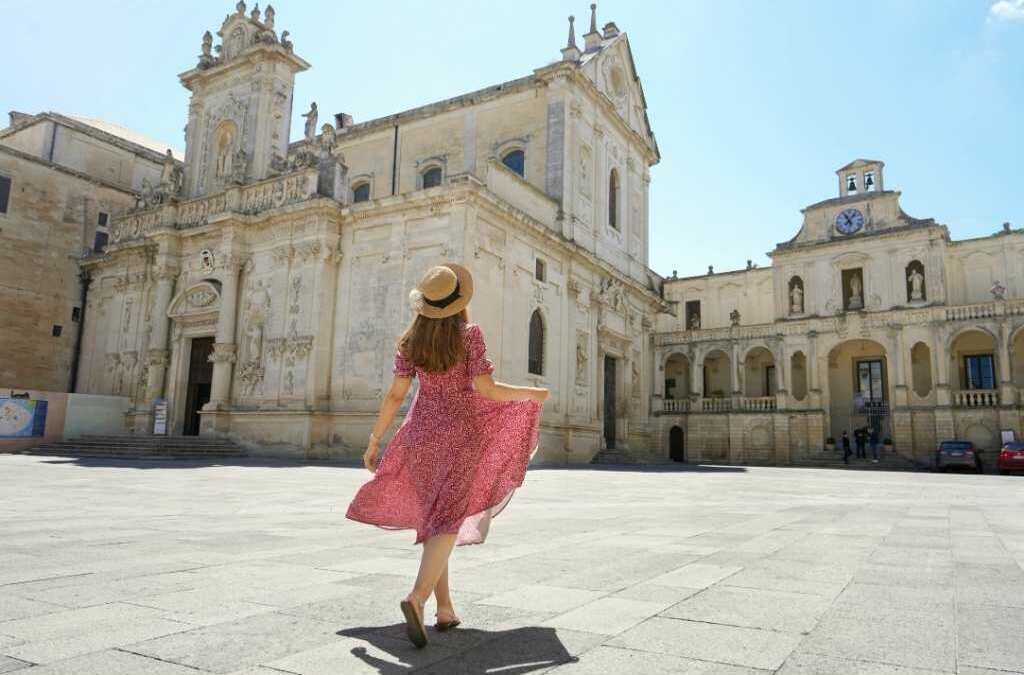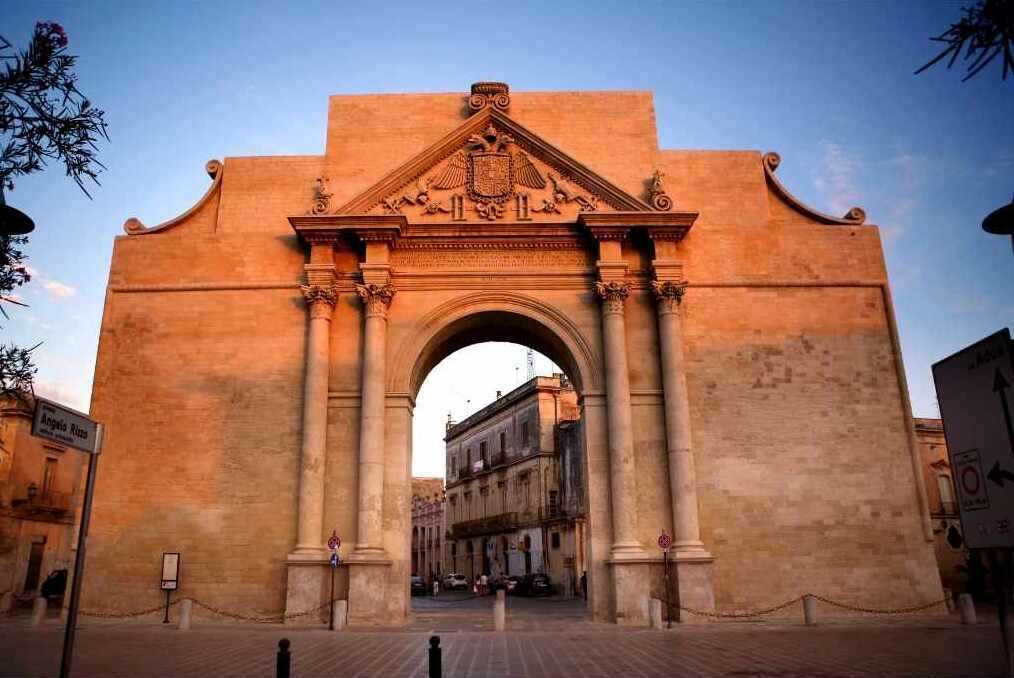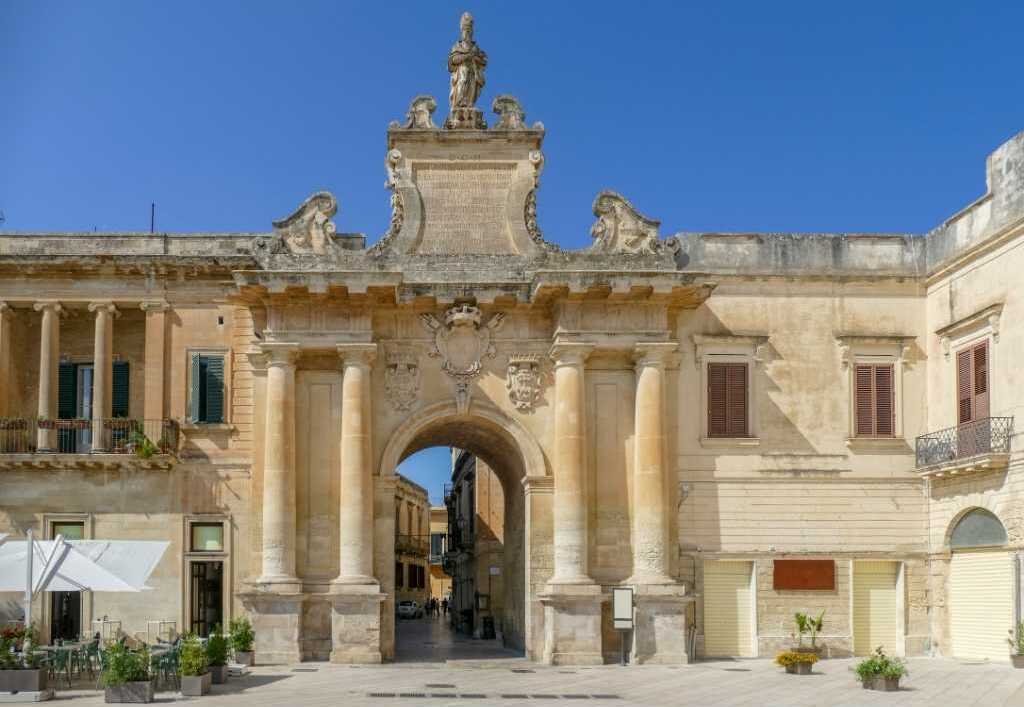Porta Rudiae in Lecce
Lecce, one of the most fascinating and historically rich cities in Puglia, is famous for its unique Baroque style, but also for its ancient gates that tell centuries of stories. Among these, Porta Rudiae is one of the most significant, not only for its architectural beauty, but also for the role it has played in the history of the city.
Open on the arm of the eastern walls of the city, Porta Rudiae is the most interesting and ancient of the gates of Lecce, the one that faced the ancient destroyed city of Rudiae (today an archaeological site a few kilometers from Lecce), the place of origin of the family of the poets Ennio and Virgilio.
It is located in via Adua, near the intersection between viale dell’Università and via Dalmazio Birago.

Historical notes
Built on the ruins of an older gate that collapsed towards the end of the 17th century, Porta Rudiae was rebuilt in 1703 by the nobleman from Lecce Prospero Lubelli. Like all the other gates of Lecce, Porta Rudiae had a primarily defensive and commercial function. As the main entrance gate for those coming from Rudiae and other surrounding areas, it served to protect the city from invaders and to regulate the traffic of goods. Lecce, in fact, was a crossroads of trade between central and southern Italy, and Porta Rudiae played a crucial role in ensuring order and safety in its streets.
Architecture
The gate consists of a single arch, flanked by two columns on each side that rest on a podium and support a frieze in which the busts of the mythical founders of the city are placed: Malennio, Dauno, Euippa and Idomeneo.
This gate, also called Sant’Oronzo, is surmounted by the statue of the saint, protector of Lecce, and by those of the other protectors of the holy city Irene and San Domenico. A Latin epigraph recalls how the gate was rebuilt by order of the Lecce native Prospero Lubelli under the mayor Cesare Belli.
Its function today
Today, Porta Rudiae no longer has a defensive or commercial function, but retains a historical and cultural importance that makes it one of the most loved and visited landmarks in the city. It is one of the main tourist attractions in Lecce, a destination for visitors who come to the city to admire the architectural beauties and discover the history of Salento.
The gate, located along the route that connects the historic center of Lecce to the more peripheral area of the city, is also an important symbol of the architectural tradition of Salento. Tourists often stop to photograph it and admire its details, while residents consider it a gateway to their city, which harmoniously blends past and present.
In addition, Porta Rudiae continues to play an important role in religious and social celebrations. During some holidays, the area surrounding the gate comes alive with cultural and religious events, keeping alive the connection between the city and its traditions.

Roman Amphitheatre of Lecce
In the heart of the baroque city of Lecce, one of the most fascinating and significant monuments, which tells thousands of years of history, is the Roman Amphitheater. This extraordinary building, testimony to the glorious past of the ancient city of Lupiae, is one of the main tourist attractions of Lecce and an unmissable stop […]

Duomo of Lecce
Located in the historic center of Lecce, the Cathedral stands in one of the most evocative squares in Italy: Piazza del Duomo. This square, which surrounds the cathedral, is one of the most iconic places in Lecce, the hub of the city’s religious life. Here you can breathe in the quiet and fascinating atmosphere of […]

Lecce: to-do list
Lecce, located in the heart of Salento, is one of the most fascinating and historically rich cities in Puglia thanks to the important historical-artistic testimonies of its buildings and monuments. Not only that, Lecce also lends itself to the organization of numerous itineraries thanks to its privileged position, close to the beaches of the Salento […]

Porta Napoli in Lecce
Lecce, a city rich in history and culture, is famous for its artistic heritage, especially thanks to the magnificent Baroque style that characterizes it. Among the many monuments that embellish this city, Porta Napoli is usually the “first” that is visited by those who go to the city. The “first” because it is located right […]

Porta San Biagio in Lecce
Lecce, with its enchanting historic center, is a city that fascinates for its rich cultural and architectural heritage. One of the most fascinating testimonies of this history is represented by its gates, which once marked the entrance and exit of the city. Among these, Porta San Biagio, located at the north-east entrance of the historic […]


